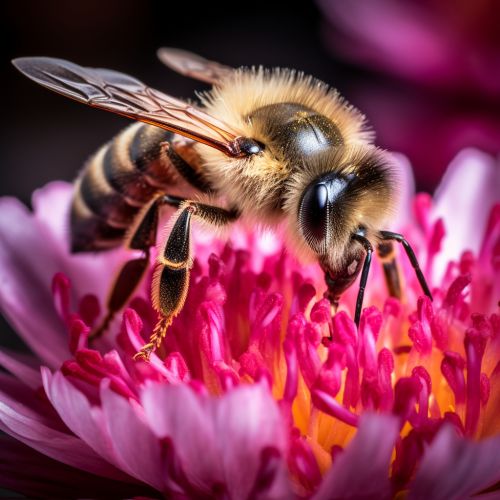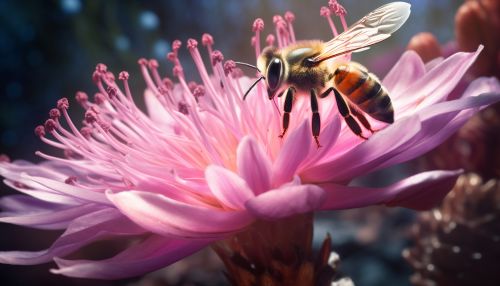Bees
Introduction
Bees are flying insects closely related to wasps and ants, known for their role in pollination and, in the case of the best-known bee species, the European honey bee, for producing honey and beeswax. Bees are a monophyletic lineage within the superfamily Apoidea, presently considered as a clade Anthophila. There are nearly 20,000 known species of bees in seven to nine recognized families, though many are undescribed and the actual number is probably higher. They are found on every continent except Antarctica, in every habitat on the planet that contains insect-pollinated flowering plants.


Evolution
Bees appear in the fossil record in the Early Cretaceous, about 130 million years ago, or possibly earlier, when they diverged from wasp ancestors. The earliest known bees were of the family Melittidae. The evolution of bees, along with the evolution of flowering plants, is closely intertwined. The morphology of bee mouthparts, the use of pollen and the evolution of brood parasitism, where one bee lays its eggs in another bee's nest, all provide important evidence for the evolutionary history of bees.
Anatomy
Bees, like all insects, have a hard exoskeleton that protects their internal organs, provides a framework for their muscles, prevents them from drying out, and assists with their sensory perception. They have three main body parts: the head, thorax, and abdomen. The bee's body is also covered in an array of fine hairs, which assist with the collection of pollen. Bees have a pair of large compound eyes which cover much of the surface of the head. Between and above these are three small simple eyes (ocelli) which provide information on light intensity.
Communication
Bees are known for their sophisticated methods of communication, most notably the waggle dance, which is used to convey the location of food sources. The waggle dance involves a series of figure-eight movements, with the direction of the central 'waggle' portion of the dance indicating the direction of the food source, and the duration of the waggle indicating the distance. Bees also communicate through the use of pheromones, which can signal a variety of messages including danger, a need for defense, or the presence of food.
Pollination
Bees play a crucial role in pollinating flowering plants, and are the major type of pollinator in many ecosystems that contain flowering plants. It is estimated that one third of the human food supply depends on pollination by insects, birds and bats, most of which is accomplished by bees. Bees either focus on gathering nectar or on gathering pollen depending on demand, especially in social species. Bees gathering nectar may accomplish pollination, but bees that are deliberately gathering pollen are more efficient pollinators.
Beekeeping
Beekeeping, or apiculture, is the maintenance of bee colonies, usually in hives, by humans. Bees are kept for their honey and other products or their services as pollinators, or for both. The practice is believed to date back at least 4,500 years. Apiculture is practiced around the world, with honey being a significant product of many regions. Beekeeping practices vary greatly around the world, depending on the type of bees being kept, the local environment, and the needs of the beekeeper.
Threats to Bees
Bees face numerous threats, including habitat loss, climate change, pesticides, diseases, and parasites. Colony Collapse Disorder (CCD), a phenomenon where worker bees abruptly disappear from a hive, has been a significant issue in recent years, particularly in North America and Europe. The causes of CCD are not fully understood, but a number of factors including mites, viruses, and poor nutrition are believed to contribute. The decline in bee populations is a significant concern due to the important role bees play in pollination.
